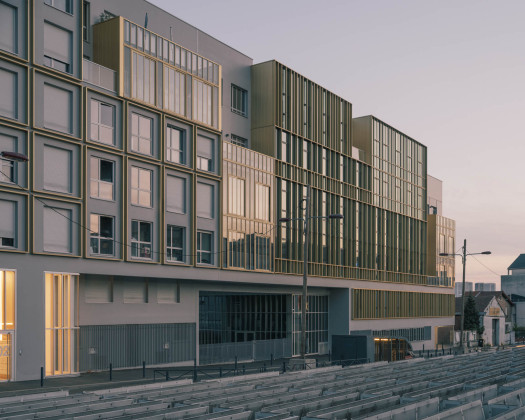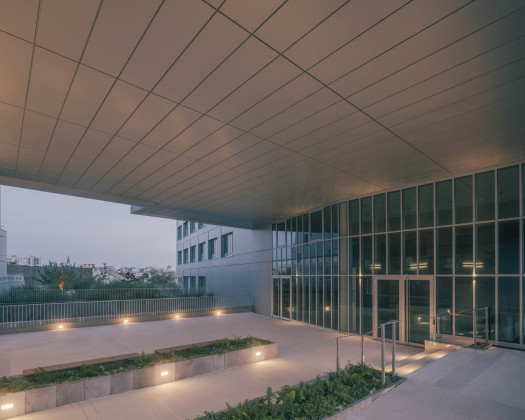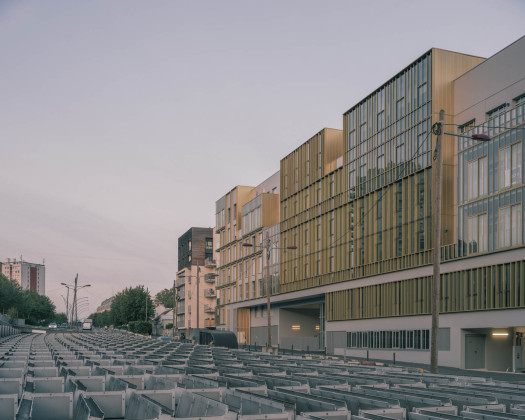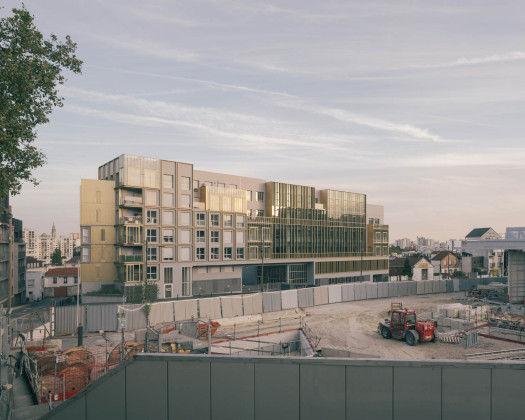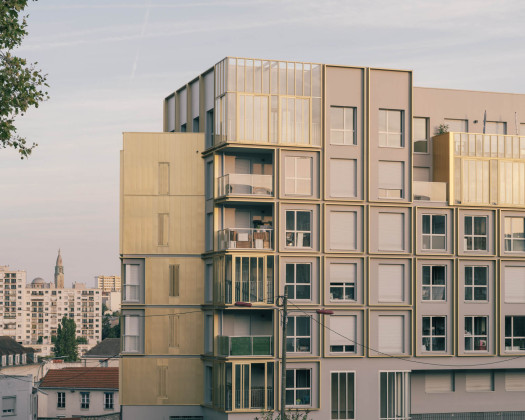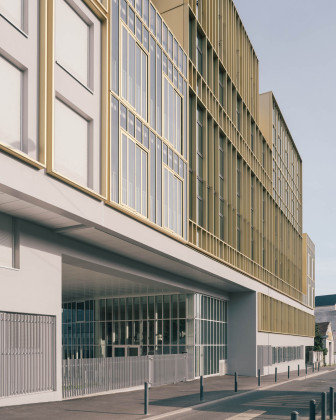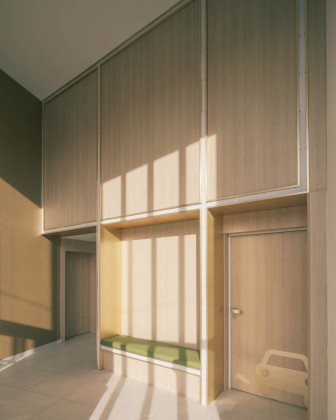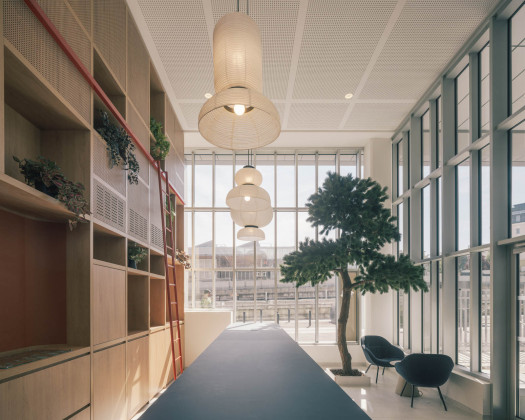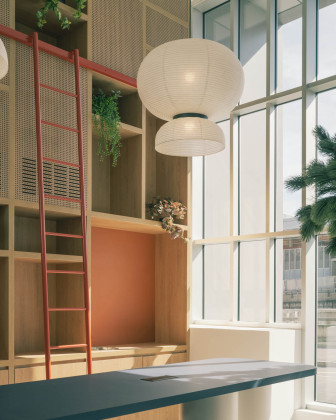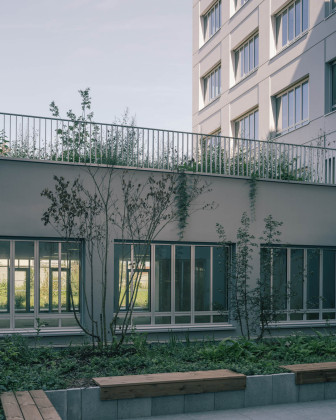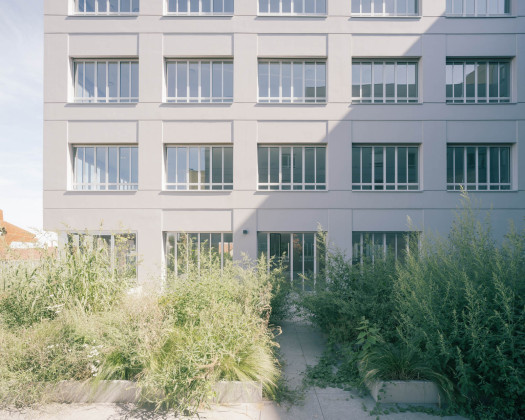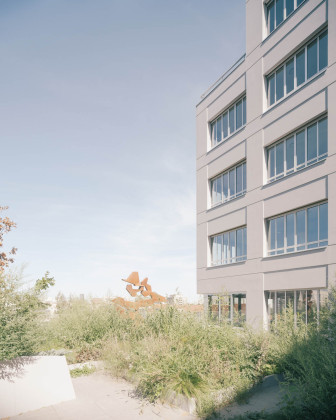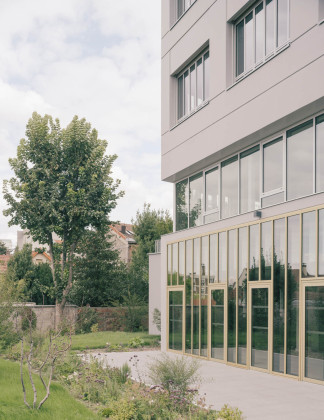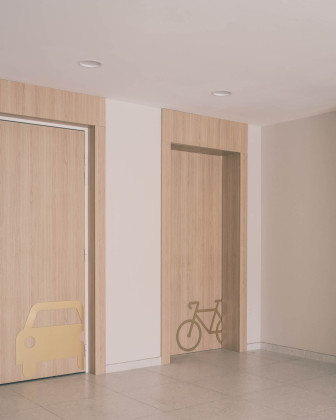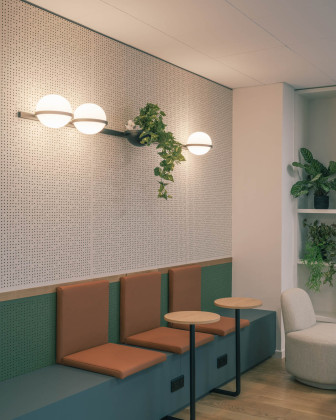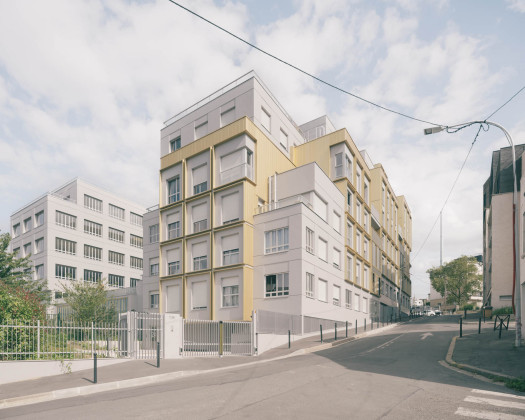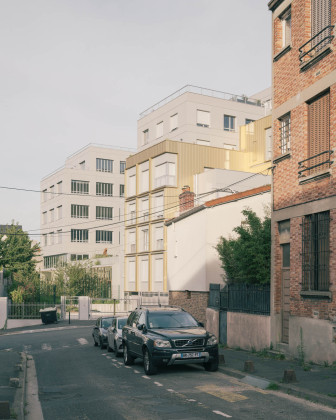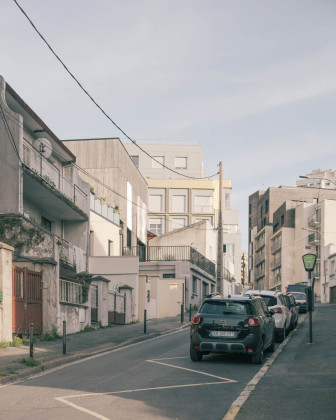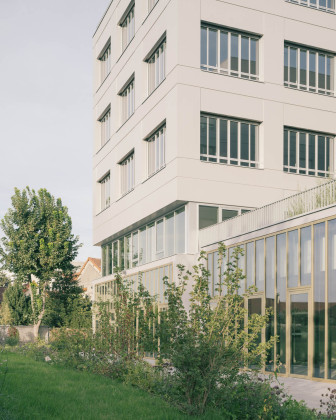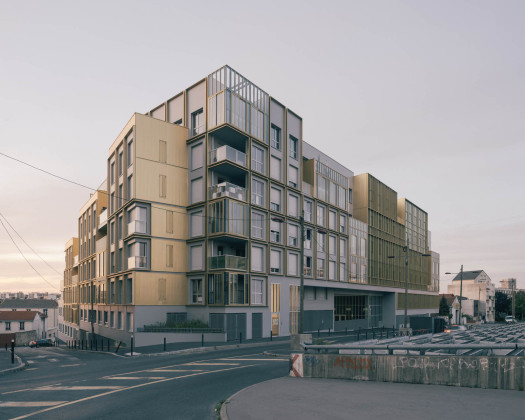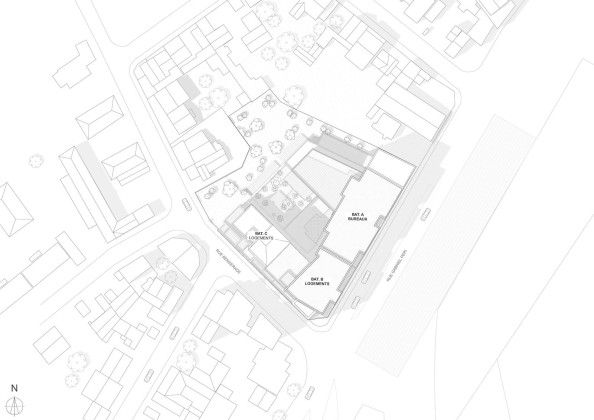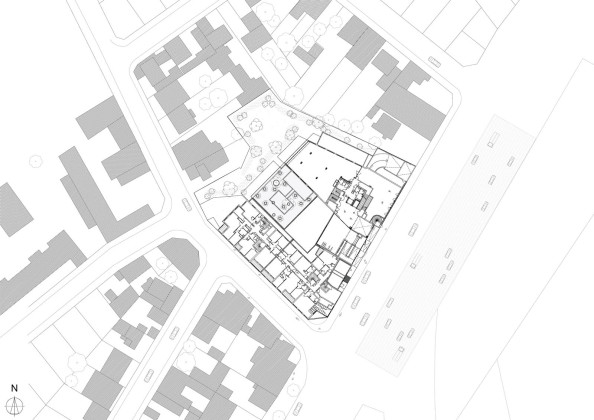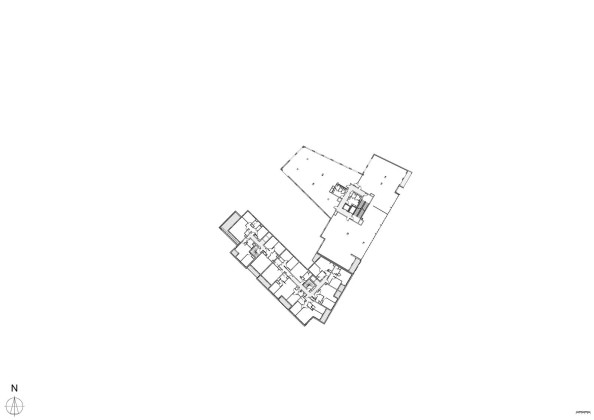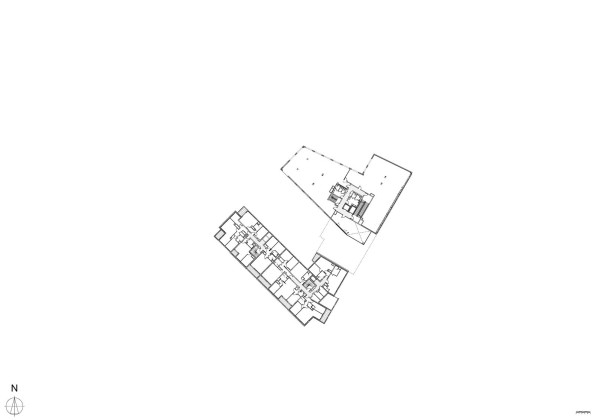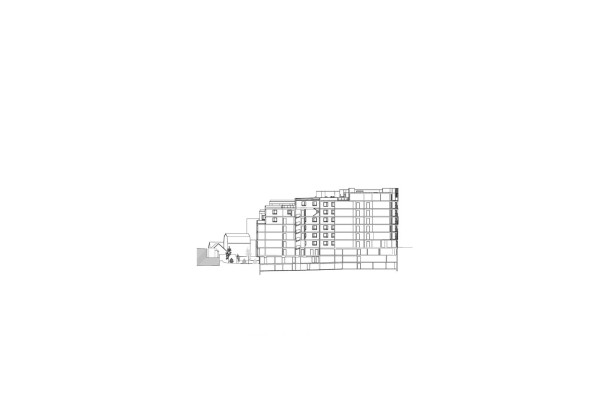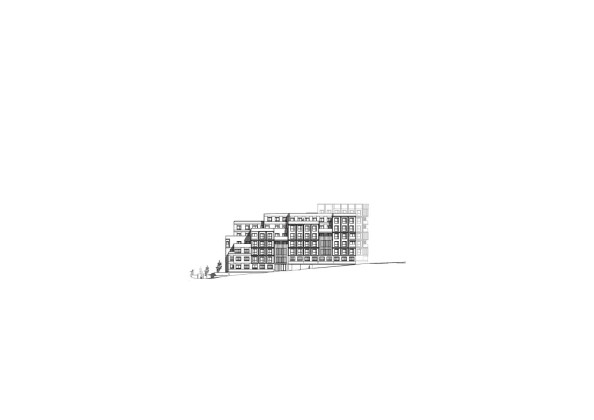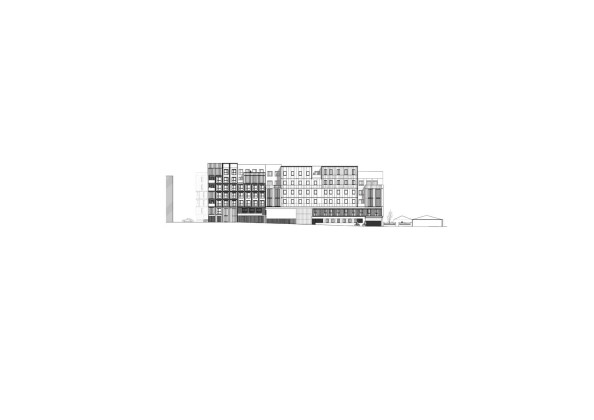Mixed Use Development in Gentilly
ALTA has created a mixed-use project in Gentilly, Paris, consisting of 61 homes (including 7 social housing units), offices, a sports hall and a cafeteria. The office describes the project as follows:
Located at the eastern end of Gentilly and facing a metro stop on line 14, which is due to open soon, the project comprises an office development by FOR IMMO and a 61-unit multi-family housing development by Bati-Paris, and is part of the city's plan to redevelop Rue Gabriel Péri.
Formerly occupied by industrial storage warehouses and at- tenant offices, the site is part of the Reine-Blanche district, a picturesque area on the heights of Gentilly overlooking the Bièvre valley, where high-rise buildings from the reconstruction period, former workers' housing, hospital buildings (Fondation Vallée), as well as recent multi-family housing developments and tertiary sector complexes (SCOR) coexist.
The project therefore needs to strike a balance between the desire for urbanity on the street facing the future high-rise development of line 14, and the need to connect with the suburban fabric below rue Benserade.
On rue Gabriel Péri, the project seeks to achieve a certain finesse in the façade work, so as to signal its presence without constituting a visual constraint, or an attempt to demarcate it from the neighbouring blocks.
The ALTA agency has worked on the reading of the building's thickness in two envelopes. The first, with its fluctuating altimetry and luminous cladding, creates a dynamic spread on the street. A second, more linear layer is revealed in the background. The second, more linear layer is revealed in a second reading in the background, turning back onto Rue Benserade and accentuated by a gradual reduction in the height of the flanking panels to match the height of the neighbouring buildings.
This approach limits the visual impact on the urban landscape and also contributes to the architectural richness of the composition of the street, avoiding a "monobloc", horizontal design of the street facades.
The building is intended to be a subtle marker of the block, and the work on the main facade forms a coherent and harmonious building front, without trying to differentiate the programmes at first glance. To achieve this, the generous dimensions of the windows are accentuated by the use of metal frames. The same metalwork is used on the rear walls of the offices, in the form of vertical brise-soleils. Winter gardens enhance the façade and further blur the boundary between the two programmes.
At the heart of the block, the architects' aim was to recover the natural shape of the original plot and create an open-ground garden that connects to the neighbouring land and provides a natural distance. The built base of the offices takes advantage of this topography and opens out generously onto the garden to take advantage of the terraces and planted areas on the same level.
The two interior façades of the homes and offices are set back to ensure that the central part of the block gets plenty of sunlight and offers views of the valley and Greater Paris. The façades at the heart of the block are more restrained and discreet, with masonry spandrel windows to ensure privacy for all.
 22.12.2023
22.12.2023



